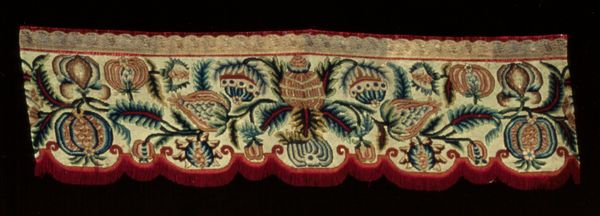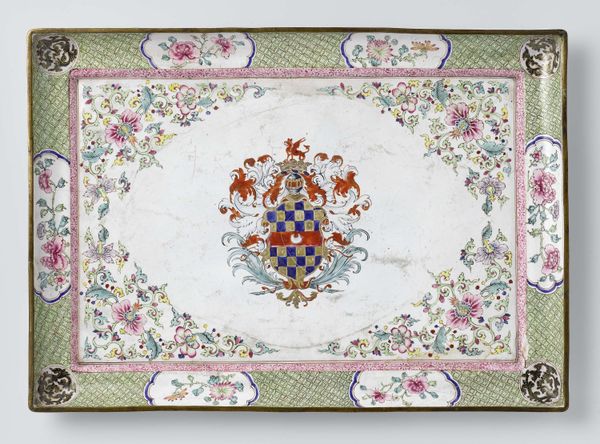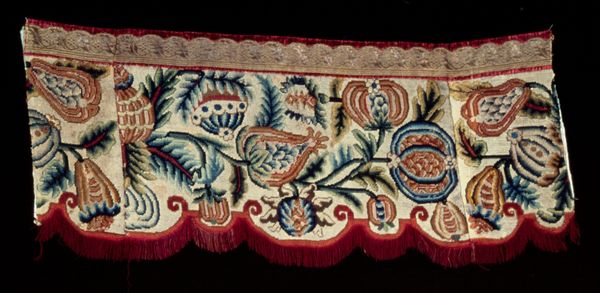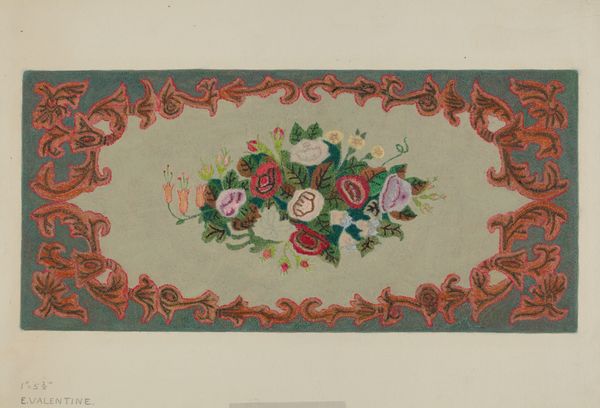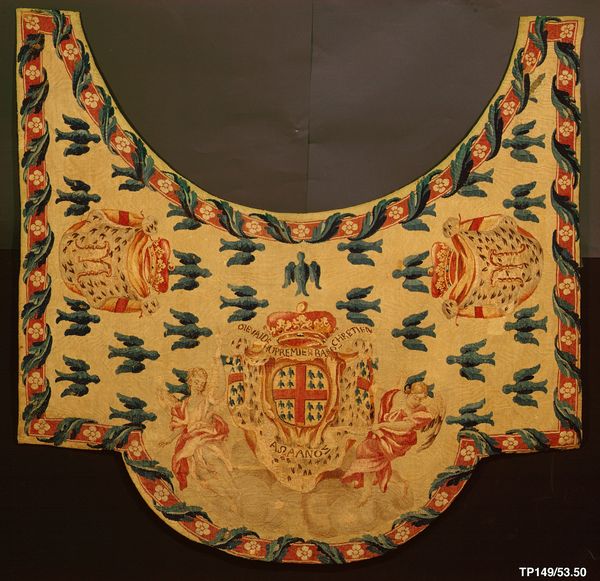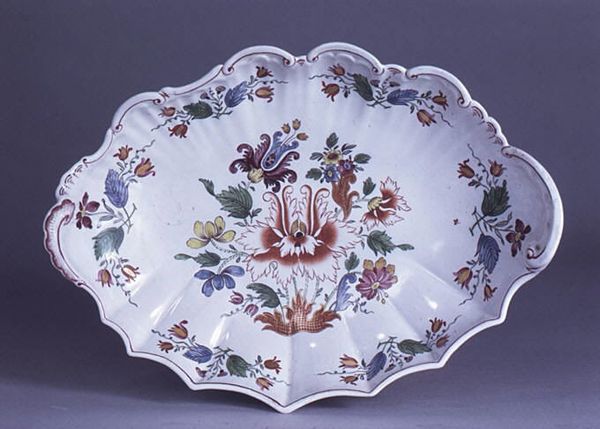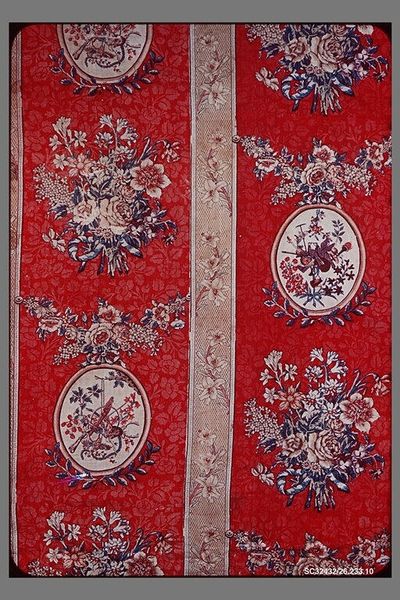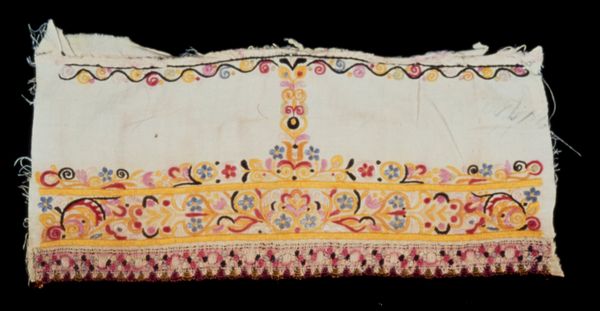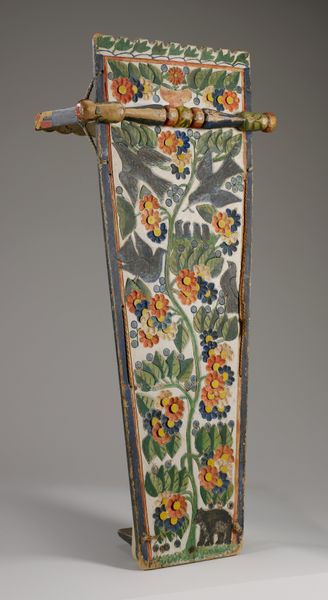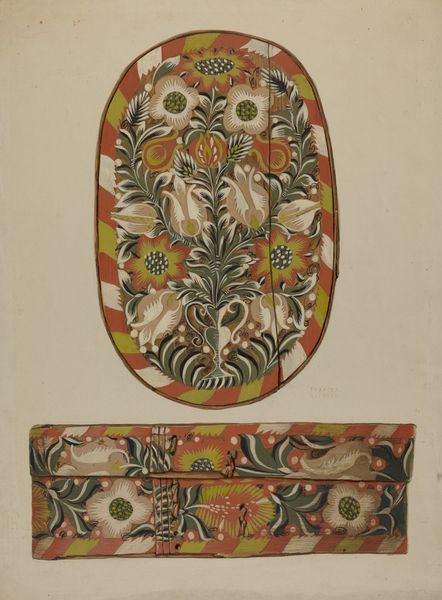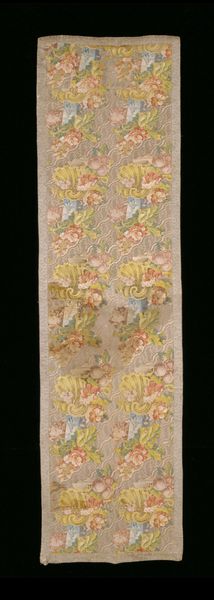
weaving, textile, sculpture
#
decorative element
#
muted colour palette
#
weaving
#
decorative
#
textile
#
flower
#
figuration
#
sculpture
#
decorative-art
#
decorative art
#
rococo
Dimensions: 57 × 95 in. (144.8 × 241.3 cm)
Copyright: Public Domain
Editor: We're looking at "Mantle," a textile piece from 1750-1760, probably made by Franciszek Glaise. The delicate floral design makes me think of a garden party. What’s your take on this impressive example of Rococo weaving? Curator: Considering its production, let's look beyond the mere aesthetic pleasure. The materials used – the threads themselves, the dyes – where did they come from? How were they sourced, processed, and by whom? These details speak volumes about 18th-century trade routes and colonial exploitation. Who do you think produced the material? Editor: It's easy to forget about that! Given the detail and timeframe, was this piece likely a one-off commission, or was it possibly produced in larger workshops? I imagine the labor involved would be significant. Curator: Precisely. We should consider it as the product of extensive labor. This was before industrialization; weaving was an intensive, manual process, wasn't it? The creation of the mantle wasn't just a creative act, but also an economic one, representing hours of work and, potentially, specific gender roles within that labor. Editor: That's a powerful reminder that art doesn't exist in a vacuum. So, how does considering its production influence how we understand its purpose, or how it may have been valued at the time? Curator: Exactly. The "Mantle" might have been perceived as high art by its commissioner and those of their class. But by examining its materiality, we recognize the skilled labor of the makers involved, thus questioning the hierarchical divisions between art and craft prevalent at the time, especially between men's work and women's domestic artisanal labor. Editor: Thinking about the mantle that way makes you rethink about it completely. The means of making it, not only the aesthetics of its decorative features, change how we understand art history. Curator: Agreed. It's crucial to question those distinctions to have a broader vision of art.
Comments
No comments
Be the first to comment and join the conversation on the ultimate creative platform.
